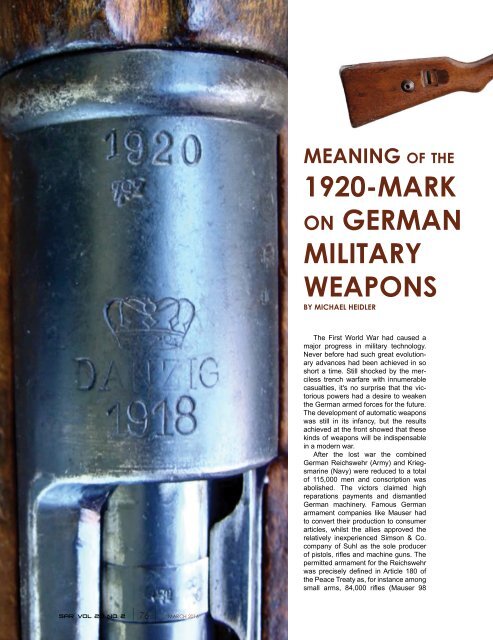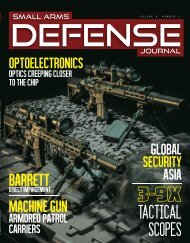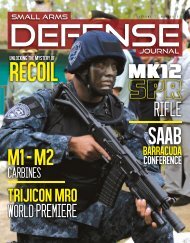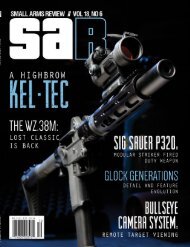SAR 20#2
Create successful ePaper yourself
Turn your PDF publications into a flip-book with our unique Google optimized e-Paper software.
MEANING of the<br />
1920-MARK<br />
on GERMAN<br />
MILITARY<br />
WEAPONS<br />
BY MICHAEL HEIDLER<br />
The First World War had caused a<br />
major progress in military technology.<br />
Never before had such great evolutionary<br />
advances had been achieved in so<br />
short a time. Still shocked by the merciless<br />
trench warfare with innumerable<br />
casualties, it's no surprise that the victorious<br />
powers had a desire to weaken<br />
the German armed forces for the future.<br />
The development of automatic weapons<br />
was still in its infancy, but the results<br />
achieved at the front showed that these<br />
kinds of weapons will be indispensable<br />
in a modern war.<br />
After the lost war the combined<br />
German Reichswehr (Army) and Kriegsmarine<br />
(Navy) were reduced to a total<br />
of 115,000 men and conscription was<br />
abolished. The victors claimed high<br />
reparations payments and dismantled<br />
German machinery. Famous German<br />
armament companies like Mauser had<br />
to convert their production to consumer<br />
articles, whilst the allies approved the<br />
relatively inexperienced Simson & Co.<br />
company of Suhl as the sole producer<br />
of pistols, rifles and machine guns. The<br />
permitted armament for the Reichswehr<br />
was precisely defined in Article 180 of<br />
the Peace Treaty as, for instance among<br />
small arms, 84,000 rifles (Mauser 98<br />
<strong>SAR</strong> Vol. 20, No. 2 76 MARCH 2016









